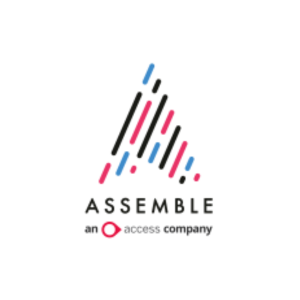Insights
INSIGHTS
All Topics
How charities can prioritise employee wellbeing
18 May 2022by Mary Wessel
We look at how charities can support employee wellbeing, with advice on avoiding presenteeism, open communication, and much more
As an individual, there’s a lot you can do to support your wellbeing. But when it comes down to organisations, leaders have an all-important role in making sure wellbeing is embedded in work culture.
Why is supporting wellbeing important?
Many charity workers are under great pressure. A CharityComms survey found that 39% of respondents have felt overwhelmed at work and that 75% have been busier than ever, stating: “Comms teams are more stretched, services are more in demand and resources and budgets are tight.”
Clearly an overworked, stressed, and tired team isn’t going to be able to deliver their best. So prioritising employee wellbeing at an organisational level is mutually beneficial for employees and charities.
A thriving team is going to have more clarity, creativity, and drive to be able to deliver great work. Prioritising wellbeing will also result in fewer people needing support for work-related stress and illness, and therefore less resources needed to help them.
According to the Chartered Institute of Personnel and Development: “Investing in employee wellbeing can lead to increased resilience, better employee engagement, reduced sickness absence, and higher performance and productivity.”
And for individuals, knowing that your organisation supports wellbeing can lead to better mental and physical health.
So how can leaders within charities embed wellbeing from the top down? Here are a few ways to help your organisation create a healthy work/life culture.
Make flexible working arrangements the norm
The pandemic proved that working from home is a viable and preferred option for many. Going forward, hybrid working is likely to become commonplace for many organisations.
Allowing staff to shape their own working hours means that they’ll be able to find a work/life balance that works for them. And that in turn means less stress and more productivity.
Flexible working doesn’t only allow people to save time and money on commuting. It means they can work at times when they know they’re most productive, do the school run without then running to catch a train, go for a lunchtime gym class, or work from home when needing to concentrate on writing a report.
It also gives people the opportunity to break up their workday with their personal interests – whether sport, reading, or yoga – which can refresh their minds and get more out of their day.
Avoid presenteeism
Alongside flexible working comes the increased risk of presenteeism. It’s no new phenomenon – people have often dragged themselves into work when they’re ill and should be resting.
But with hybrid working enabling some team members to work from home and others the office, there’s a danger of those more physically present in the office to be promoted more quickly or offered better opportunities.
Simply being aware of the potential of presenteeism is a good start. And putting in place opportunities for the whole team to spend time together, either virtually or physically, will help to ensure a more level playing field.
Support your team to take time off when they need it
When collectively a team has a heavy workload, it can be difficult for people to ask for time off – even when they’re entitled to it as part of their annual leave. But having a break (and that includes taking a lunch break or walk round the block) can help to release any stress and come back to work with more energy and clarity.
Always listen and encourage open communication
According to Qualtrics, people who feel like they belong are almost three times as likely to have a greater sense of wellbeing.
There are lots of ways to encourage a sense of belonging to an organisation and listening to what your team has to say is crucial in building a sense of trust and support. And that could include rolling out surveys for regular feedback or making time to chat with a colleague who’s had a tough day.
Alongside that is cultivating a culture that is open to talking about mental health. Because when people are listened to, they feel respected and valued.
Know where your team can find extra support
Your charity may well have an employee support scheme, in which case you should be aware of how to signpost employees who need extra support – which could include professional counselling or psychotherapy.
But if you work for a smaller organisation, it may be worth finding out about external support that could help any team members who are having a tough time. For example, CharityComms has a ‘Wellbeing Guide for Communication Professionals’, there are numerous Facebook support groups, and the Chartered Institute of Fundraising has a private group of 2,000 plus members.
There are also networking groups such as CharityMeetup which often include wellbeing topics in their sessions.
Mary Wessel
More on this topic
Recommended Products
21 Jan 2025by Charity Digital
Building strong data foundations before AISponsored Article
15 Jan 2025by Laura Stanley
How to revisit your charity’s story in 2025Sponsored Article
Our Events
Charity Digital Academy
Our courses aim, in just three hours, to enhance soft skills and hard skills, boost your knowledge of finance and artificial intelligence, and supercharge your digital capabilities. Check out some of the incredible options by clicking here.















